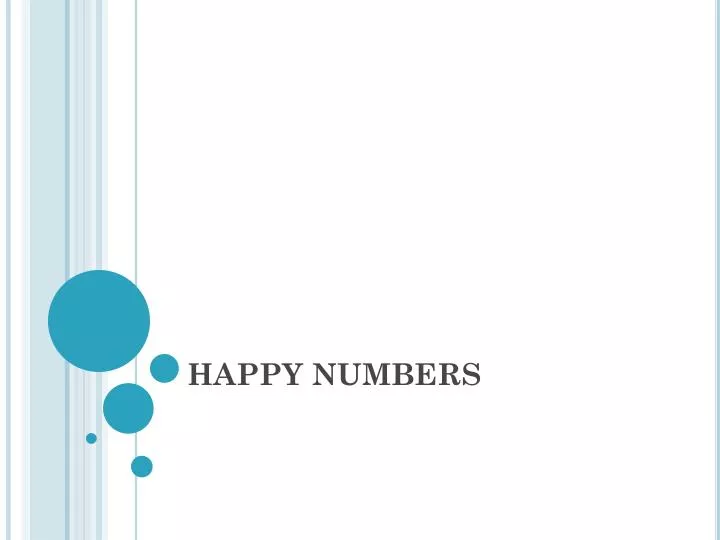

We have been learning about square numbers, maybe to practice them.Mathematicians like to play with numbers.To learn from others in the class how they solved the problem.Every time I have shared this problem with students, I usually end by asking: Why do you think we did this problem today? What did we learn?Student answers typically sound like: This is a low floor-high ceiling task in that ALL students have an easy entry point square, add repeat… while it offers the challenge of looking for patterns, noticing, making predictions…ĭuring our sharing time, we share the patterns we noticed, the ways we were able to predict future happy numbers. In a typical 50 minute period, students square numbers dozens or hundreds of times, all searching for the 20 happy numbers that exist between 1-100. For example, if 19 is a happy number and it becomes an 82, then 68, then 64… then 82, 68 and 64 should be happy numbers too! Other students use this information to be able to predict other happy numbers.

Other students realize that if 18 is a sad number, then all of the numbers in its pattern will also be sad numbers (18, 65, 61, 37, 58, 89, 145, 42, 20, 4, 16, 37…) which helps them narrow down their search quite nicely. Some students realize that if the number 19 is a happy number, then so will the number 91. Again, I encourage them to try to predict other happy numbers. However, it usually isn’t long before students start finding numbers that will work. Students typically start at a random number and try to work through the process described above. I also ask them to try and predict numbers, not just going in order from 1 through 100. Once the idea of a happy number is explained to a class, I ask students to try to find as many of the happy numbers as possible between 1-100. The number 18 will continually loop (notice the 37s, you can figure out what comes next), while the number 19 quickly results in a 1 making it happy. Numbers that start to loop will not result in the number 1, and are therefore called SAD numbers. Numbers that result in the number 1, remain at 1 and are therefore HAPPY.

Happy NumbersĪ happy number is a number defined by the following process: Starting with any positive integer, replace the number by the sum of the squares of its digits, and repeat the process until the number either equals 1 (where it will stay), or it loops endlessly in a cycle which does not include 1.(definition from Wikipedia) So here is a problem that I give students that have recently started learning about square numbers. While there are lots of ways to do this (problem solving, games, open-middle …), I thought I would give an example of how we can do both problem solving that requires thinking and reasoning, and practice a new skill at the same time. So finding ways to practice a skill, while continuing to develop our ability to reason mathematically is a goal of mine. Mathematics is about thinking and reasoning… making sense of things.Practice is important in the consolidation process.


 0 kommentar(er)
0 kommentar(er)
